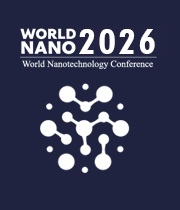Title : Facile synthesis of modified Styrene–maleic anhydride/ Zinc oxide polymer nanocomposites for supercapacitor applications
Abstract:
Styrene-maleic anhydride (SMA) is widely used for electrochemical and biological applications because of its high heat resistance and dimensional stability along with good specific reactivity of the anhydride groups. In order to achieve highly stable cycling performance and high capacitance values, –NH2 group is introduced into the polymer matrix by functionalizing it with a diamine moeity. Zinc oxide nanoparticles were prepared by chemical reduction method and loaded at different wt % into the diamine modified Styrene-maleic anhydride (SMA-DDM) polymer matrix. To prepare materials having large surface area is an important aspect for increasing the efficiency of supercapacitors by adding Zinc oxide in higher weight percentages. The surface chemistry of these materials was characterized by Scanning electron microscopy(SEM), Transmission electron microscope (TEM) and Brunauer–Emmett–Teller (BET). Functional groups and their interactions were studied using Fourier Transform Infrared Spectroscopy (FTIR) and Ultraviolet–Visible spectrophotometry (UV). The crystal structure of the polymer nanocomposites was determined using Powder X-ray diffraction (XRD) technique .Thermal stability of the composites were evaluated from the Thermogravimetric Analysis (TGA) and Differential Scanning Calorimetry (DSC) results. The composite acts as an electrode material on forming active slurry with activated charcoal (AC) powder and Nafion binder. The prepared polymer nanocomposite electrodes have been electrochemically characterized using cyclic voltammetry (CV) at different scan rates and A.C impedance techniques at various frequency ranges. Charge–discharge (CD) techniques confirmed the cycling stability of the prepared polymer nanocomposites.
Audience take away:
1. This work will help to extrapolate the already existing literature available on the use of Zinc oxide as supercapacitors.
2. Functionalisation of polymers with different moieties to increase its conductivity and electrochemical performance.
3. Green synthesis techniques can be carried out as an extension to this work and a comparison can be drawn with respect to the results obtained.



